#Tararuas
Explore tagged Tumblr posts
Text
Waiopehu Hut loop
My first tramp in New Zealand for five months due to overseas travels, the Waiopehu Hut loop was a satisfying 33km overnight hike in the north-west part of the Tararua Ranges, close to Levin. It made me appreciate how different hiking in New Zealand is compared with much of Europe, as I carried a much heavier pack with everything I needed, over much rougher and more challenging terrain, and…
#Gable End Ridge#Greek Monastery of The Holy Arcangels#Hike#Hiking#photography#Poads Road#Poads Road car park#Six Discs Track#Tararua Ranges#Tararuas#tramping#travel#Waiopehu Hut#Waiopehu Track
1 note
·
View note
Text

#remy says#it's dark outside i'm at the back of the laundromat where it's warm eating moondarra's honey & pistachio cheese with hiymalayan salt cracker#& drinking a tararua dairy coffee & reading giovanni's room by james baldwin & listening to four by one direction because i just remembered#how good it is & so . so high
9 notes
·
View notes
Text
Yeah, I lived with a guy who did the colour grading on LoTR when it was being filmed. Every single colour in the original is deliberate. Hours, days and weeks of work went into making Rivendell glow with soft Autumnal golds, and the mountains have the chilly blue/green of glacier melt. And now it looks like a generic dentist office landscape print.
I am in love w the way pre 2000s films have that hazy feel to them. hd honestly kills the vibe
#it was middle earth#and now it's just aotearoa#which is fine#i like aotearoa#but it's not a land where epic fantasy happens#the tararua mountain club could be on a trip boiling up some tea just out of frame in most of it now
105K notes
·
View notes
Text
It was unseasonably cold last night at the orchard, late Spring. 3C , no frost though. Fire on inside. 🔥 Glorious sunny day today. The trees won’t know what’s happening! Last snow on the Tararua ranges behind us. #Spring #snow #orchard #apples #pears #TararuaRanges

0 notes
Text
1881 Tararua Shipwreck, New Zealand
A friend of mine, in Tasmania, Australia, & I are reading a fictionalized account of the infamous Tararua Shipwreck off Waipapa Point, Southland. I decided to do the chart. Over here is the news report. The SS Tararua left Port Chalmers in Dunedin on 29 April, 1881, carrying a crew of forty and one hundred and eleven passengers. It also had a cargo of £4000 sterling, never reclaimed. Its next…
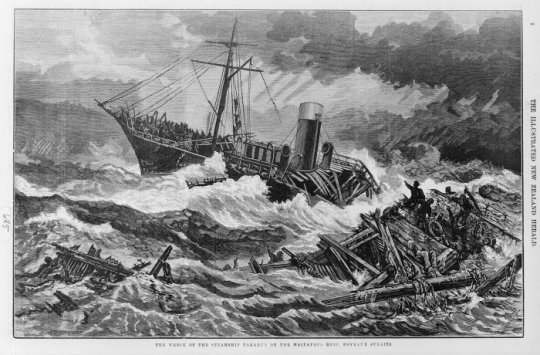
View On WordPress
0 notes
Text

Leslie Adkin - Gentiana - mountain flowers on the high altitudes of Tararuas, c. 1910
460 notes
·
View notes
Text







damn, been forgetting to put my Te Araroa sketchbook on here... here's the rest of the North Island - Tongariro NP, Whanganui - Palmerston North, Tararua Range, Wellington




40 notes
·
View notes
Text

Humidicutis mavis
“Humidicutis mavis fungi near Waiohine Gorge in Tararua Forest Park, New Zealand.” - via Wikimedia Commons
#humidicutis mavis#fungi#wild fungi#fungus#mushrooms#mushroomcore#fungicore#nature#plants#moss#mosscore#waxcap#Hygrophoraceae#wikipedia#wikipedia pictures#wikimedia commons#basidiomycota#agaricomycetes#agaric#agarics
51 notes
·
View notes
Text
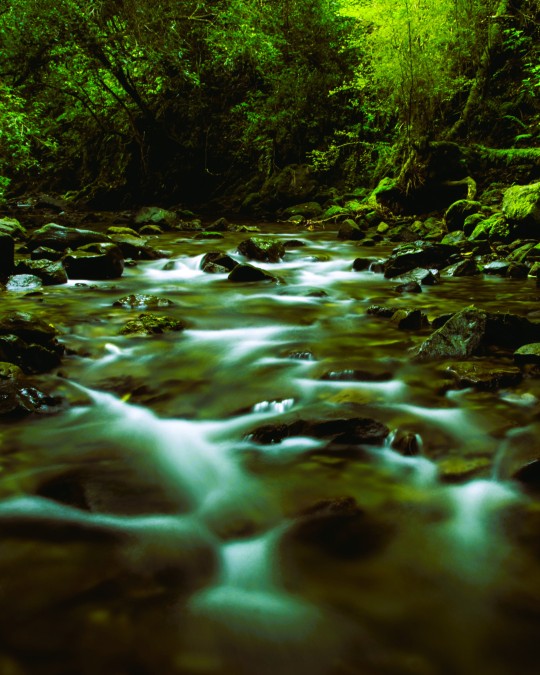
Waikanae River, New Zealand: Waikanae River is located on the Kāpiti Coast in the North Island of New Zealand. The river drains the western flanks of the Tararua Ranges around Reikorangi and the Akatarawa Valley, then passes to ... Wikipedia
92 notes
·
View notes
Photo
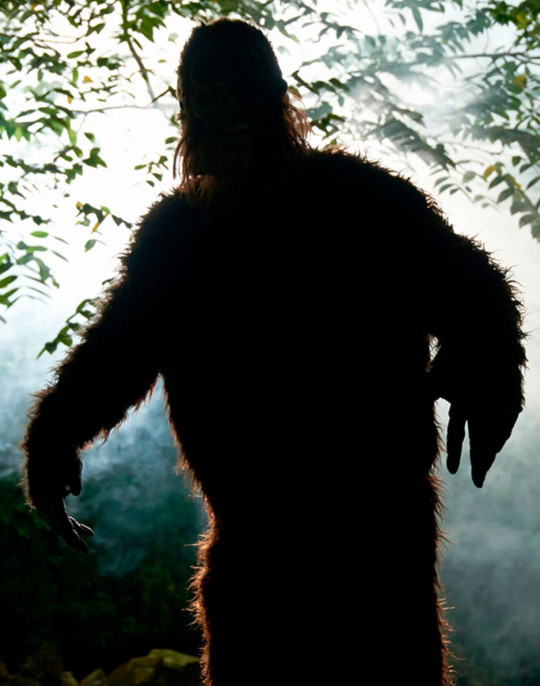
Legends and myths about trees
Forest spirits and natives (1)
Maero – The Fierce Bigfoot in New Zealand folklore
Maero are creatures that appear only in Maori mythology. This mythical creature is sometimes described as a type of wild man, such as the Yeti of the Himalayas or the Sasquatch of Native American lore.
In Māori tradition, the Maero are an iwi-atua or supernatural people from New Zealand. They are sometimes described as giants or wild men of the woods, and inhabit mountains and forest, particularly in the South Island and Tararua Range. Maero are characterised as wild, malevolent and often violent, carrying stone clubs as weapons. They are covered in dark body hair and have long, bony fingers with sharp fingernails. They kill and eat humans and other animals.
The Maero are said to harbour anger towards the Māori, who arrived from Hawaiki, and are thought to have displaced them and ruined the tapu (sacredness) of their homes, forcing them to dwell in inhospitable alpine regions.
There are several Māori tales that tell of encounters between the Maero and the Māori. Still, the most bizarre tale regarding the Maero is that of Tukoio who succeeds in killing one of these creatures.
Tukoio cut of the Maero’s arms, legs and head. He took the head home, perhaps as a trophy. The head was still alive, however, and was calling for help. Tukoio, who did not wish to fight a whole group of Maero on his own, dropped the head, and went to get reinforcements. When he came back, the head was gone, and it is said that the Maero reassembled itself, and returned to the forest. In most stories, the Maero are not known to possess supernatural powers such as this.
Unlike the Yeti and the Sasquatch, however, there are no alleged sightings of this creature, the folklore of the severed head staying alive rings a bell. There was a tale of Bran the Blessed, a giant and king of Britain in Welsh mythology who ordered his fellows to cut off his head and bring it back to London. As I recall, the head survived for nearly 80 years.
If you follow myths and legends from around the world, both East and West, you will find many similar legends. Moreover, many have been rewritten by religion and power struggles. Above all, there is not a single person in the world who actually knows the past.
In fact, thousands or hundreds of millions of years ago on Earth (the Universe), there must have been unimaginable creatures and various phenomena taking place. George Lucas and Philip K. Dick may have communicated with beings from the past in their dreams.
Who knows?
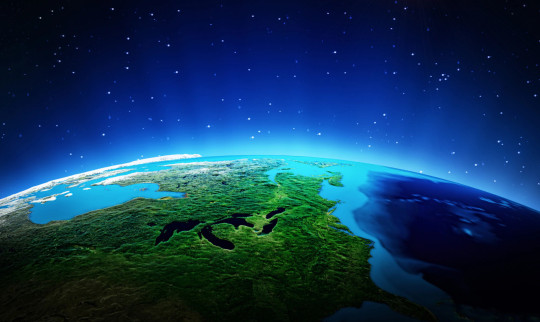
木にまつわる��説・神話
森の精霊たちと原住民 (1)
マエロ 〜ニュージーランドの伝説、怖いビッグフット
マエロはマオリ族の神話にのみ登場する生き物である。この神話上の生き物は、ヒマラヤのイエティやネイティブ・アメリカンの伝承であるサスカッチのような野生の人間の一種と表現されることがある。
マオリ族の伝統では、マエロはニュージーランドのイウィ・アトゥア (超自然的な人々) である。マエロは野性的で悪意があり、しばしば凶暴で、武器として石の棍棒を持っているとされる。彼らは黒い体毛に覆われ、骨ばった長い指と鋭い爪を持っている。人間や他の動物を殺し、食べる。
マエロは、ハワイキからやってきたマオリ族に怒りを抱いていると言われ、マオリ族を追い出し、彼らの家のタプ(神聖さ) を台無しにして、人を寄せ付けない高山地帯に住むことを強いたと考えられている。
マオリの伝説には、マエロとマオリの出会いを描いた物語がいくつかあるが、マエロにまつわる最も奇妙な物語は、一匹を殺すことに成功するトゥコイオの物語である。トゥコイオはマエロの腕、足、頭を切り落とした。そして、トロフィーとしてか、その首を持ち帰った。しかし、頭部はまだ生きていて、助けを求めていた。一人でマエロの集団と戦うのを避けるため、トゥコイオは首をその場に置き、援軍を呼びに行った。戻ってきたときには首はなくなっており、マエロが自分で再び組み立て、森に帰っていったと言われている。多くの物語では、マエロがこのような超能力を持っていることは知られていない。
イエティやサスカッチとは異なり、この生物の目撃例はないが、切り落とした首が生き続ける伝承には、どこかで聞き覚えがある。
ウェールズ神話に登場するブリテンの王で巨人のブランが、仲間に命じて自分の首を切り落とし、ロンドンに持ち帰ったという話があった。確か、その首は80年近くも生きながらえた。
東西を問わず、世界中の神話や伝説を追っていくと、似たような言い伝えが多々ある。しかも、多くは宗教や勢力争いによって書き換えられている。何より、過去を実際に知っている人��この世に一人も存在しない。
実は、数千、数億年前の地球 (宇宙) では、わたしたちの想像を絶する生き物が存在し、色々な現象が起こっていたに違いない。ジョージ・ルーカスやフィリップ・K・ディックは、夢の中で過去の存在と交信していたのかも…。
本当のことは誰にも分からない。
#trees#tree myth#tree legend#mythology#legend#folklore#bigfoot#maero#maori mythology#new zealand#nature#art
108 notes
·
View notes
Text
Marchant Ridge Track
Probably the quickest way to get above the Tararua bushline from Wellington, a return walk to Marchant Ridge made for a decent day out in the hills. It’s only a 45 minute drive from central Wellington to the DOC car park on Kiwi Ranch Road, allowing access into the Kaitoke Regional Park area of the Tararua Ranges. On the way I stopped at the Stuart Macaskill Lakes lookout for early morning still…

View On WordPress
#day tramp#day walk#Dobson Loop Track#Hike#Hiking#Kaitoke#Kaitoke Regional Park#Marchant Ridge Track#photography#Puffer Saddle#Stuart Macaskill Lakes#Tararua Ranges#Tararuas#Tramp#travel#Walk#Wellington#Wellington day walk
0 notes
Text
Te Hōkioi, and Speculation on the Dietary Habits of the Great Eagles
He Hōkioi, i runga, he Hōkioi, i runga, hū.
(The great eagle, from above, made a booming call)
Kei te āputa koe, nā, o te rangi, e noho ana,
(In the open space, there, in the sky, it dwells)
Te hoa moenga, nō whatitiri mātakataka;
(Death's companion, with crashing thunder)
Hei aha, tērā, e tararua mārire, ona hikumaro?
(Why, then, do its tail feathers no longer split the quiet in two?)
Rua maro tonu, ona hakikau;
(Two fathoms wide, its wings;)
E huhū nei, i runga te rangi,
(It called, above in the sky)
Hōkioi, Hōkioi.
(The sound: hōkioi, hōkioi.)
- poem/chant by the great Ngāti Toa chief Te Rauparaha
For @tolkienofcolourweek, I'm spending seven days bringing Māoritanga and mātauranga Māori to the world of Tolkien! Starting off on day 1 with: what did Manwë's Eagles eat?
Such massive animals, especially flying ones, would have required a huge caloric intake. We have little evidence about what potential prey may have existed in Beleriand and Middle Earth. The Hobbit mentions them eating sheep, and it seems likely that they would hunt other large animals, such as deer or bison. But there's nothing in our modern world that compares to or fills an ecological niche like Manwë's Eagles.
This is where I draw on Māori oral history of the largest eagles to ever live.
In English they're called Haast's Eagles, but in Māori there are several names. Probably the most well-known of the Māori names is pouakai/poukai, but my people called them hōkioi.
They were massive, weighing as much as 17.8 kg (about 39 lbs) and with wingspans as large as 3 metres (about 10ft). Their feet and claws were the size of modern day tigers, capable of punching through bone. They hunted prey more than fifteen times their own size.
(Granted, the eagles of Manwë are much larger than even the hōkioi! Still, it's similar enough for me to draw inspiration.)


[Left image: an artist's rendition of a hōkioi perched on a rock. Right image: an artist's rendition of a hōkioi attacking the neck of a giant flightless bird.]
The hōkioi's primary prey was the moa, large flightless birds similar to ostriches or emus. With no large land mammals on the islands, hōkioi were the apex predators.
Then, circa 900 CE, large mammals came to Aotearoa for the first time. They also preyed on moa, reducing the hōkioi's food supply. So perhaps it was natural that the hōkioi began to hunt these mammals as new prey.
Unfortunately, those mammals were us.
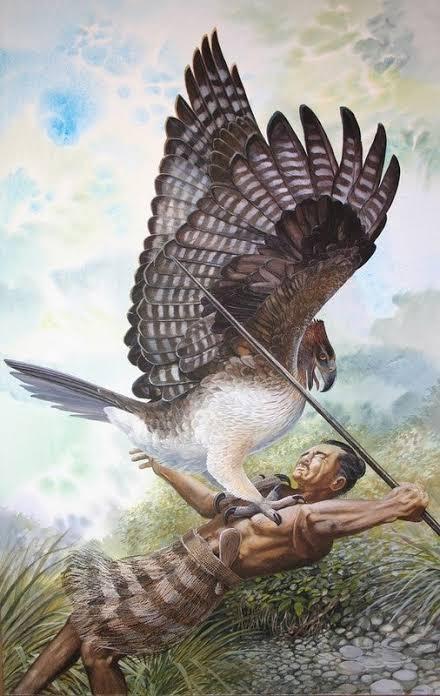

[Left image: an artist's rendition of a hōkioi attacking a Māori man who holds a spear. Right image: an artist's rendition of a child running from a hōkioi.]
Our stories of the hōkioi, or pouakai, tell of giant birds that could swoop down from the sky to kill and eat even strong warriors. They were also known to carry off small children.
I'm not saying that the eagles of Manwë ate elves or humans. (I think they were probably given firm instructions not to!) It would make sense for them to prey on orcs and other creatures of Morgoth, though. And there's one other group who we know were hunted like animals in Beleriand, due to... misunderstandings. A group who the Eagles may not have initially recognized as sentient creatures. A group who would have been an ideal size to pick up and carry off as a snack.
I'm just saying, I think there may have been multiple reasons that dwarves chose to live underground.
-
(Sources for further information about te hōkioi:
The man-killer that fell from the sky
NZ Birds: Haast's Eagle)
#māori-fying tolkien#silmarillion#silm meta#tocweek2023#mine#yes this is a little bit cracky#i fully acknowledge that#so please don't be weird in my notes and inbox#(also i SWEAR i haven't forgotten about my wips and i promise i'm working on them!)
79 notes
·
View notes
Text
Ostatniej soboty w Oriental Bay
grupa pływacka spotkała się na treningu. Pogoda była wspaniała, bezchmurne niebo i woda niemal jak lustro; warunki w Wellington nieczęste. Był kwadrans po szóstej. O tej porze pierwsze promienie słońca dopiero co odbiły się od szyb biurowców przy Aotea Quay, głównej ulicy wybrzeża.


Z tamtej też strony niosło się po wodzie dudnienie ciężarówek wjeżdżających na prom Connemara, jedną z dwóch jednostek firmy Bluebridge zacumowanych po zachodniej stronie zatoki, przy dworcu kolejowym. Interislander z kolei, którego port znajduje się dalej na północ, odpływał właśnie do Picton, przecinając Wellington Harbour. Daleko za nim widać było wyraźnie grzbiet Tararuas wraz z najwyższym Mount Hector.

Pływacy tymczasem przyoblekli się w swoje pianki, weszli do wody i umawiali trasę — kto, dokąd, w jakich grupach. Stanęło na tym, że moja żona wraz z Catherine płyną do położonej ponad kilometr dalej latarni, a reszta robi dwa szybkie okrążenia na podobnym dystansie między bojami nawigacyjnymi dzielącymi latarnię od brzegu. Grupa jest zgrana, pilnują siebie nawzajem i nie zostawiają nikogo w wodzie.

Po chwili odpłynęli, pozostawiając mi ponad godzinę na przyjrzenie się kwitnącym właśnie drzewom pohutukawa — New Zealand Christmas trees — oraz odpływającemu promowi Bluebridge Connemara, który w międzyczasie zdążył się załadować.



Pływaków przychodziło coraz więcej — niektórzy z bojkami/piankami na dłuższą trasę, niektórzy tylko do zakotwiczonej kilkadziesiąt metrów od brzegu platformy, a jeszcze inni tylko na pojedynczego nura, po którym wychodzili z wody, wycierali się i wracali do swoich dziennych spraw. Parking, o 6:30 jeszcze pusty, bliżej 8:00 był już wypełniony do ostatniego miejsca.

Dziewczyny wróciły nieco po ósmej, po czym odjechaliśmy. Dzień nie rozpoczął się jeszcze dobrze, a już tyle wrażeń i widoków! W takich momentach czuję się, jakbym był na wakacjach.
2 notes
·
View notes



